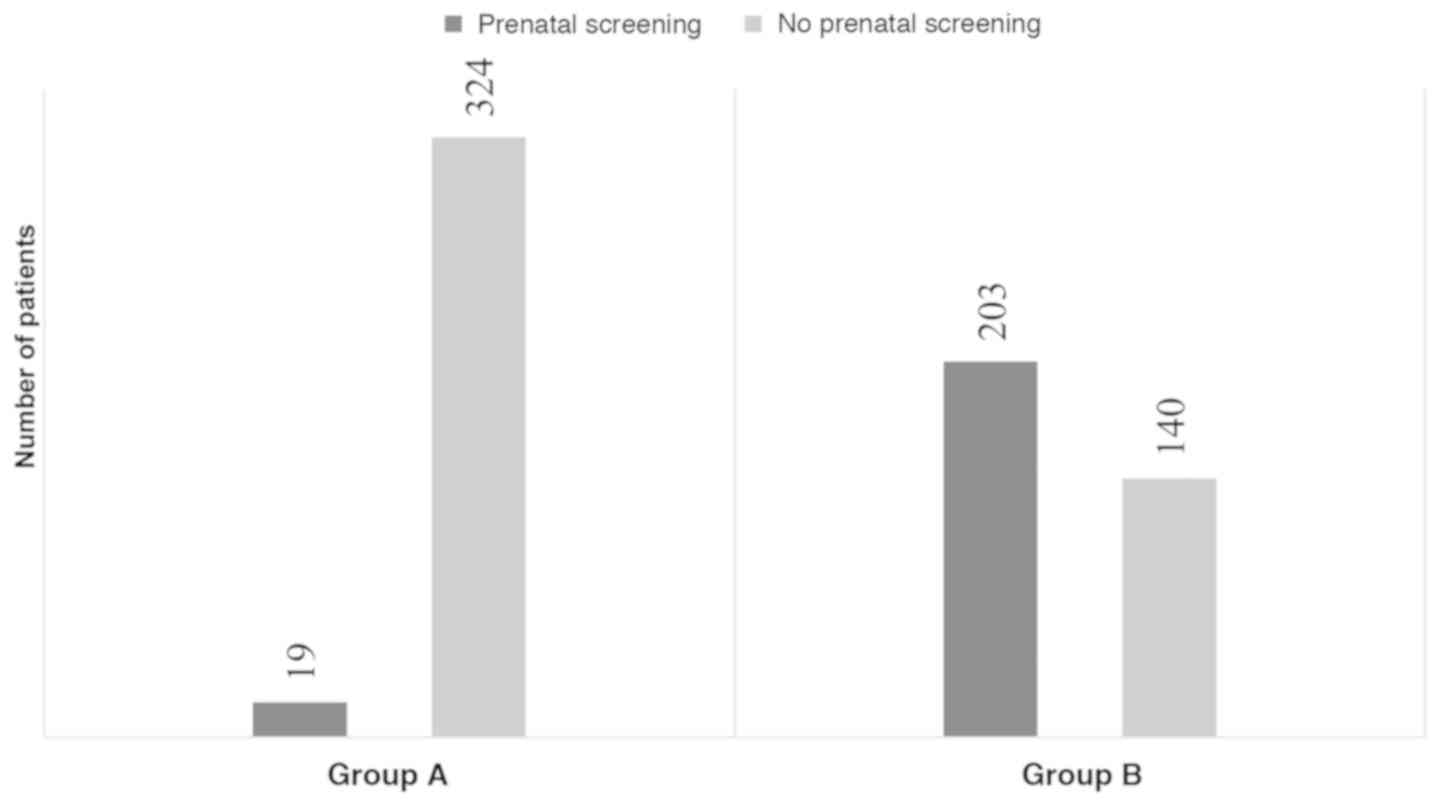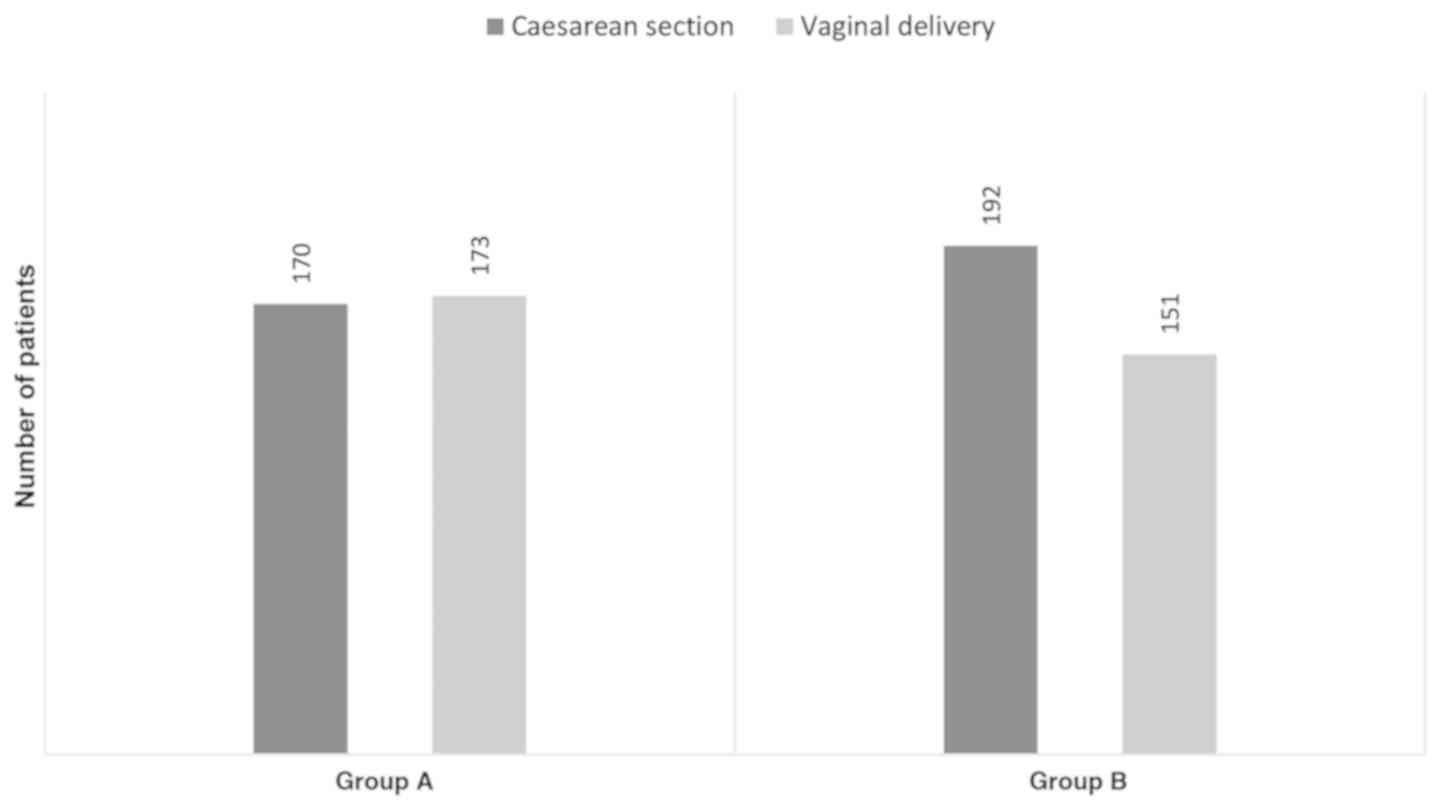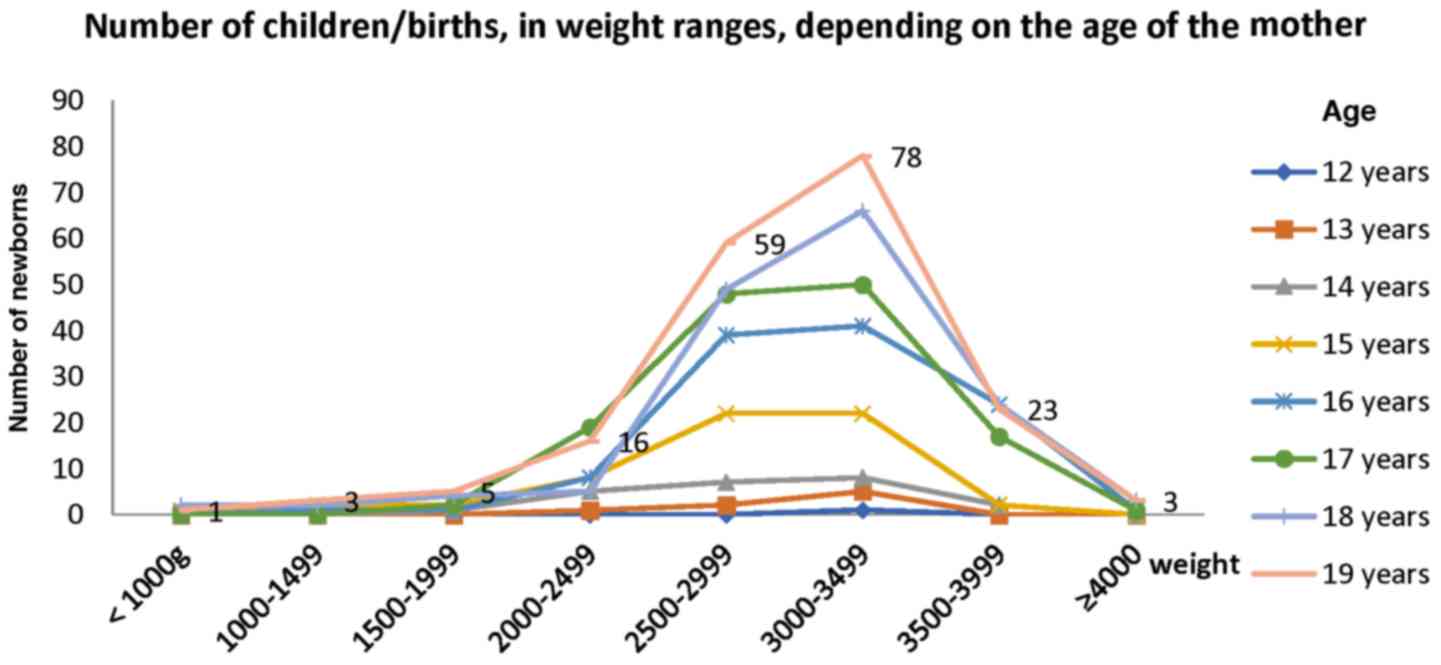|
1
|
Cook SM and Cameron ST: Social issues of
teenage pregnancy. Obstet Gynecol Reprod Med. 25:243–248. 2015.
|
|
2
|
Torvie AJ, Callegari LS, Schiff MA and
Debiec KE: Labor and delivery outcomes among young adolescents. Am
J Obstet Gynecol. 213:95.e1–95.e8. 2015.PubMed/NCBI View Article : Google Scholar
|
|
3
|
Fraser AM, Brockert JE and Ward RH:
Association of young maternal age with adverse reproductive
outcomes. N Engl J Med. 332:1113–1117. 1995.PubMed/NCBI View Article : Google Scholar
|
|
4
|
Gortzak-Uzan L, Hallak M, Press F, Katz M
and Shoham-Vardi I: Teenage pregnancy: Risk factors for adverse
perinatal outcome. J Matern Fetal Med. 10:393–397. 2001.PubMed/NCBI View Article : Google Scholar
|
|
5
|
Chen XK, Wen SW, Fleming N, Demissie K,
Rhoads GG and Walker M: Teenage pregnancy and adverse birth
outcomes: A large population based retrospective cohort study. Int
J Epidemiol. 36:368–373. 2007.PubMed/NCBI View Article : Google Scholar
|
|
6
|
Ganchimeg T, Ota E, Morisaki N, Laopaiboon
M, Lumbiganon P, Zhang J, Yamdamsuren B, Temmerman M, Say L,
Tunçalp Ö, et al: WHO Multicountry Survey on Maternal Newborn
Health Research Network: Pregnancy and childbirth outcomes among
adolescent mothers: A World Health Organization multicountry study.
BJOG. 121 (Suppl 1):40–48. 2014.PubMed/NCBI View Article : Google Scholar
|
|
7
|
Hoque M and Hoque S: Comparison of
perinatal and obstetrics outcomes among early adolescents, late
adolescents and adult pregnant women from rural South Africa. East
Afric J Pub Health. 7:171–176. 2010.PubMed/NCBI View Article : Google Scholar
|
|
8
|
González-Andrade F and Saeteros-Cordero X:
Pregnancy in adolescence and adverse neonatal outcomes in
Ecuadorian mestizo newborns. Pediatr Neonatol. 61:216–223.
2020.PubMed/NCBI View Article : Google Scholar
|
|
9
|
Sánchez-Gómez A, Cevallos W, Grijalva MJ,
Silva-Ayçaguer LC, Tamayo S, Jacobson JO, Costales JA,
Jiménez-Garcia R, Hernández-Barrera V, Serruya S, et al: Social
factors associated with use of prenatal care in Ecuador. Rev Panam
Salud Publica. 40:341–346. 2016.PubMed/NCBI
|
|
10
|
Parra-Pingel PE, Quisiguiña-Avellán LA,
Hidalgo L, Chedraui P and Pérez-López FR: Pregnancy outcomes in
younger and older adolescent mothers with severe preeclampsia.
Adolesc Health Med Ther. 8:81–86. 2017.PubMed/NCBI View Article : Google Scholar
|
|
11
|
Svanemyr J, Guijarro S, Riveros BB and
Chandra-Mouli V: The health status of adolescents in Ecuador and
the country's response to the need for differentiated healthcare
for adolescents. Reprod Health. 14(29)2017.PubMed/NCBI View Article : Google Scholar
|
|
12
|
Paladugu RK, Donipudi PC, Chimata D and
Jasti M: Adolescent pregnancy and its outcomes: A cross-sectional
study. Int J Comm Med Pub Health. 5:4408–4414. 2018.
|
|
13
|
Rogers MM, Peoples-Sheps MD and Suchindran
C: Impact of a social support program on teenage prenatal care use
and pregnancy outcomes. J Adolesc Health. 19:132–140.
1996.PubMed/NCBI View Article : Google Scholar
|
|
14
|
Bohîlțea RE, Zugravu CA, Neacsu A, Navolan
D, Berceanu C, Nemescu D, Bodean O, Turcan N, Baros Al and Cîrstoiu
MM: The prevalence of vitamin D deficiency and its obstetrical
effects. A prospective study on Romanian patients. Rev Chim.
70:1228–1233. 2019.
|
|
15
|
Tyrberg RB, Blomberg M and Kjølhede P:
Deliveries among teenage women - with emphasis on incidence and
mode of delivery: A Swedish national survey from 1973 to 2010. BMC
Pregnancy Childbirth. 13:204–214. 2013.PubMed/NCBI View Article : Google Scholar
|
|
16
|
Munteanu O, Ispas A, Berceanu C and
Vladareanu S: Development of scoring system for evaluating the risk
of vephalopelvic disproportion. Res Sci Today. 7:120–125. 2014.
|
|
17
|
Jain P and Gupta M: Maternal outcome in
teenage pregnancy. Indian J Obstet Gynecol Res. 6:263–267.
2019.
|
|
18
|
Levy DM: Emergency Caesarean section: Best
practice. Anaesthesia. 61:786–791. 2006.PubMed/NCBI View Article : Google Scholar
|
|
19
|
Smith D, Stringer E, Vladutiu CJ, Zink AH
and Strauss R: Risk of uterine rupture among women attempting
vaginal birth after cesarean with an unknown uterine scar. Am J
Obstet Gynecol. 213:80.e1–80.e5. 2015.PubMed/NCBI View Article : Google Scholar
|

















